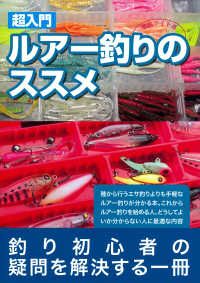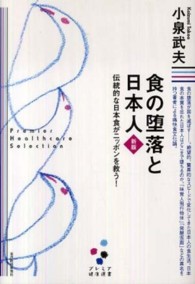- ホーム
- > 洋書
- > 英文書
- > Cinema / Film
Full Description
This book analyzes representations of mass violence in film and fiction about African, South American, and Asian genocides, from the points of view of the bystander and the survivor. It argues that in commercial film and fiction, metaphors and looks represent the violence and trauma indirectly, even when the representation is quite graphic; whereas in experimental novels and films, looks used to describe the violence are individualized or interactive. Both Bapsi Sidhwa's novel Cracking India and Deepa Mehta's film Earth deal with the violence of the partition of India in 1947. While Cracking India educates us about the dangers of "the beast" (the violence), Earth shows us the impact the beast has on victims like the beautiful Ayah/nanny. Similarly, both Buchi Emecheta's novel Destination Biafra and Charles Enonchong's videos The Nigerian-Biafran War, Parts I, II & III, depict the Nigerian Civil War of 1966-69. Yet, while Emecheta's metaphors of division and bestiality highlight the selfishness of politicians and the suffering of civilians like Debbie, looks exchanged by the survivors and the military in Enonchong's videos highlight the tragic ways in which generals like Ojukwu betrayed and were betrayed. Metaphors and looks in Isabel Allende's novel The House of the Spirits and Bille August's movie, which is based on it, depict the terror of Pinochet's 1973-89 dictatorship in Chile. Allende and August use metaphors and looks of sight and blindness to describe torture survivor Alba/Blanca's trauma. Alba/Blanca re-tells the events of the past in order to survive. Photo journalist Alfredo Jaar's photos and notes, Let There Be Light, and Terry George's feature film Hotel Rwanda, both depict the Rwandan genocide of 1994, but their emphasis is on inability of the Western bystander/reader to hear or see the pain of the survivors. Accordingly, Jaar and George choose "dark" metaphors and looks to represent the violence, using diffuse lighting, fades, and absences to stand for the violence and trauma. Overall, representations of genocide that involve individualized metaphors and interactive looks are vitally important if the complexities of that violence are to be appreciated in the West.







